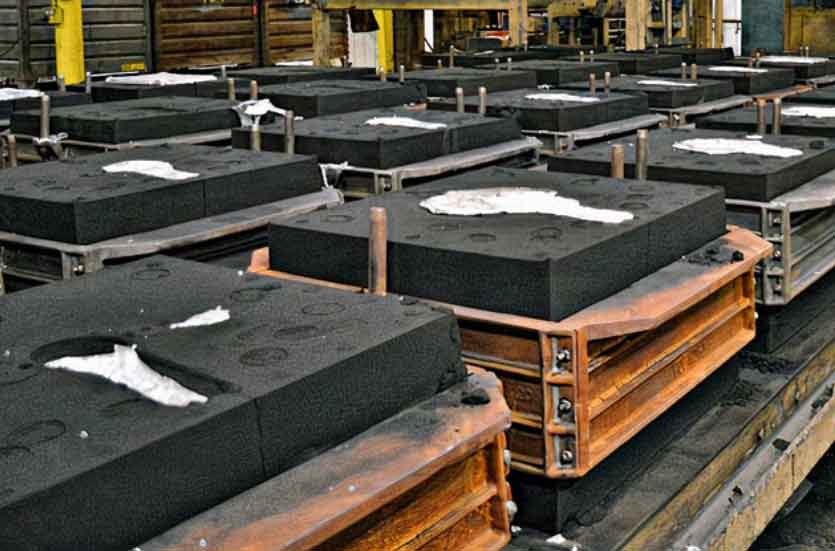Resin sand casting and traditional casting methods have their own advantages and considerations. Let’s compare these two casting methods:

Resin Sand Casting:
Advantages:
- Design Flexibility: Resin sand casting allows for the production of complex shapes, intricate details, and thin-walled components that may be challenging to achieve with traditional casting methods.
- Cost-Effectiveness: Resin sand casting is a cost-effective casting method, especially for small to medium-sized production runs. It reduces upfront tooling costs and eliminates the need for expensive permanent molds or dies.
- Surface Finish: Resin sand casting produces castings with good surface finish and dimensional accuracy, reducing the need for extensive post-casting machining or surface treatments.
- Versatility in Materials: Resin sand casting supports a wide range of metal alloys, providing flexibility in material selection to meet specific application requirements.
- Short Lead Times: The relatively simple and efficient resin sand casting process allows for shorter lead times compared to traditional casting methods.
- Rapid Prototyping: Resin sand casting enables the quick production of functional prototypes, facilitating faster product development cycles and design iterations.
Considerations:
- Mold Preparation Time: The preparation and curing time of the resin sand mold can be relatively longer compared to traditional casting methods, extending the overall production time, particularly for larger or more intricate molds.
- Mold Fragility: Resin sand molds can be more fragile compared to molds made with traditional casting methods, requiring careful handling and transportation to avoid mold breakage.
- Environmental Considerations: The use of resin in the sand casting process may generate emissions during the curing process. Proper ventilation and resin waste management practices are important for environmental considerations.
Traditional Casting Methods (e.g., Investment Casting, Die Casting, etc.):
Advantages:
- High Precision and Surface Finish: Traditional casting methods often offer higher precision and better surface finish compared to resin sand casting.
- Wide Range of Material Options: Traditional casting methods support a broad range of materials, including specialized alloys, enabling the production of parts with specific mechanical properties.
- Production Efficiency for Large Volumes: Traditional casting methods are well-suited for high-volume production, offering efficiency and economies of scale.
- Reduced Finishing Requirements: Traditional casting methods often produce castings with minimal need for post-casting machining or surface treatments.
- Consistency and Reproducibility: Traditional casting methods allow for consistent and reproducible production of parts, especially when using permanent molds or dies.
Considerations:
- Higher Tooling Costs: Traditional casting methods typically require expensive tooling, such as dies, molds, or patterns, resulting in higher upfront costs, especially for low-volume production runs.
- Design Limitations: Traditional casting methods may have limitations in producing complex shapes, intricate details, or thin-walled components compared to resin sand casting.
- Longer Lead Times: Traditional casting methods may have longer lead times due to the time required for tooling fabrication and setup.
- Limited Material Selection: Some traditional casting methods have limitations in the types of materials that can be used compared to resin sand casting.
In summary, resin sand casting offers cost-effectiveness, design flexibility, and shorter lead times, making it suitable for complex shapes and small to medium production runs. Traditional casting methods excel in high precision, better surface finish, and efficiency for large volumes. The choice between the two methods depends on factors such as part complexity, production volume, desired surface finish, and material requirements.
